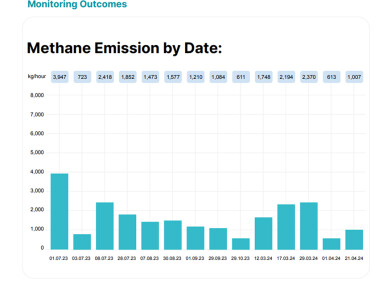Industrial emissions
What Is Emissions Abatement?
Dec 13 2021
The emission of greenhouse gases such as carbon dioxide (CO2) and methane is responsible for raising global temperatures and exacerbating the effects of climate change. If we are serious about adhering to the aims of the 2015 Paris Climate Summit and keeping atmospheric warming beneath a ceiling of 1.5°C compared to pre-Industrial Revolution levels, it’s clear that abatement needs to occur.
In this context, abatement simply means curbing emissions in order to reduce the concentration of certain gases and contaminants in our environment. There are a variety of ways in which abatement can be achieved, but below we are going to concentrate on three of the most commonly targeted and immediately actionable.
Cleaner forms of power
For far too long, the developed world has relied on highly polluting fossil fuels to generate its power and stimulate its economies. Thankfully, the world is now waking up to the long-term dangers of these energy sources and measures are be taken to address the issue. In the EU, for example, various pieces of legislation oblige companies to monitor emissions from stationary sources and remain below a pre-defined threshold, or else offset their emissions by buying credits.
While short-term gains can be made by complying with the European Trading System (ETS) and favouring cleaner fossil fuels (like natural gas and LPG over oil and coal), the long-term solution must lie in renewables. Solar, wind and hydropower are all clean and increasingly affordable methods of generating energy, so transitioning to them as a matter of urgency is the best route to abatement.
Energy efficiency
As well as phasing out damaging forms of power generation like fossil fuels, there is also an onus on everyone – governments, corporations, small businesses and private individuals – to address their own carbon footprint. This means reducing their consumption of energy where possible and optimising their efficiency elsewhere.
In practical terms, this could translate into insulating our homes better, opting for LEDs over other forms of lighting and turning off lights and appliances when not in use. In terms of transportation, carpooling or taking public transport can reduce the emissions generated by a journey, while favouring improved mileage vehicles or switching to a hybrid or electric car is an even better alternative.
Carbon capture and storage
A third technique for abating emissions is the use of sophisticated technology which removes the harmful gases at the source and pumps it into underground reservoirs or aquifers. Known as carbon capture and storage (CCS), this innovative idea is still in the development stages and although various trials have been successfully performed at power plants and industrial facilities throughout the UK, it’s far from the finished article.
What’s more, CCS represents only a stopgap measure that will allow us to prolong our combustion of fossil fuels a little longer, easing the burden on transitioning to renewable forms of energy generation. While they might certainly play an important role in reducing emissions in the short and medium terms, the long-term solution must centre on achieving net zero via forms of power generation which incur no emissions whatsoever.
Digital Edition
AET 28.4 Oct/Nov 2024
November 2024
Gas Detection - Go from lagging to leading: why investment in gas detection makes sense Air Monitoring - Swirl and vortex meters will aid green hydrogen production - Beyond the Stack: Emi...
View all digital editions
Events
Jan 12 2025 Abu Dhabi, UAE
Jan 14 2025 Abu Dhabi, UAE
Jan 20 2025 San Diego, CA, USA
Carrefour des Gestions Locales de L'eau
Jan 22 2025 Rennes, France
Safety, Health & Wellbeing LIVE
Jan 22 2025 Manchester, UK



















